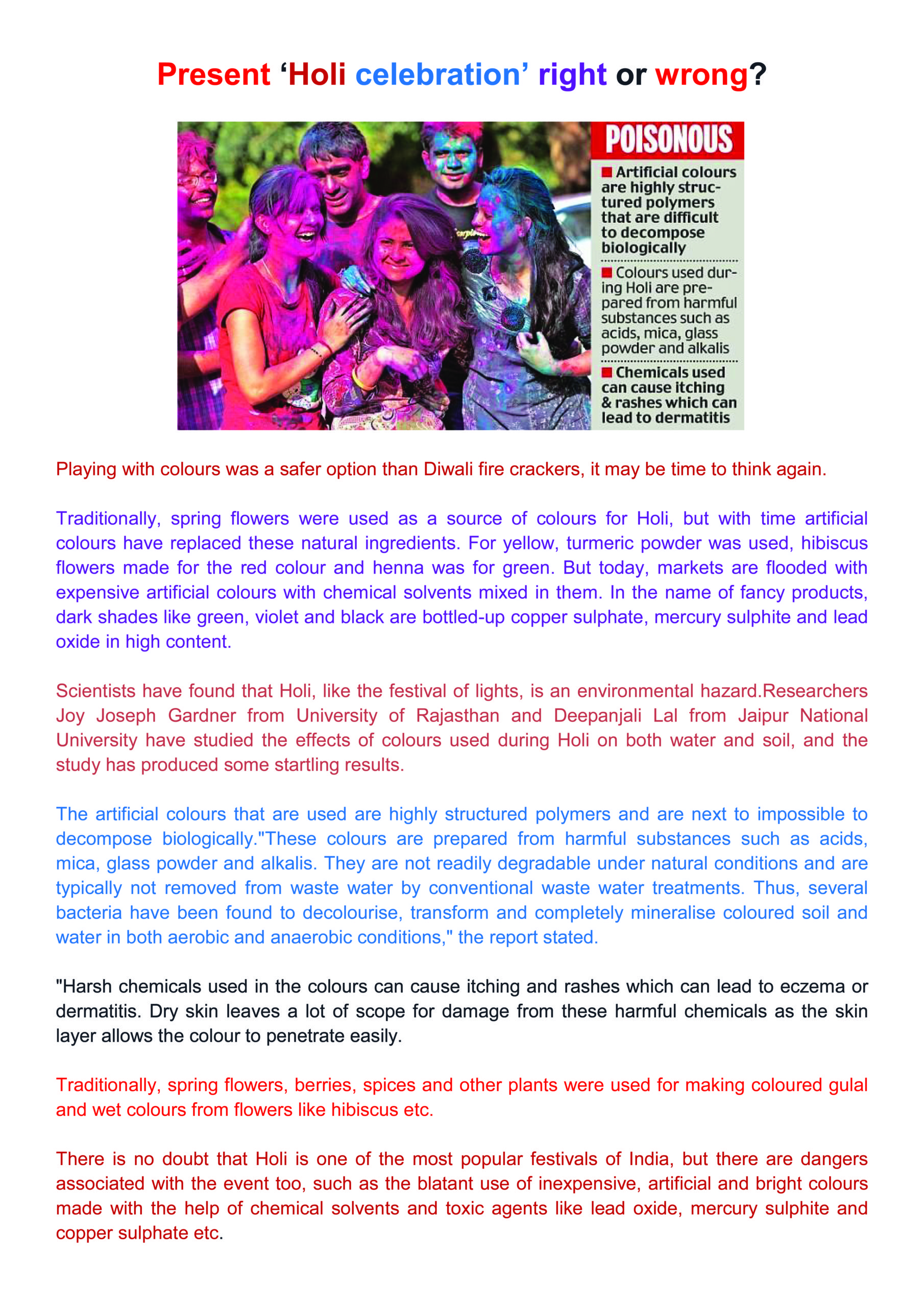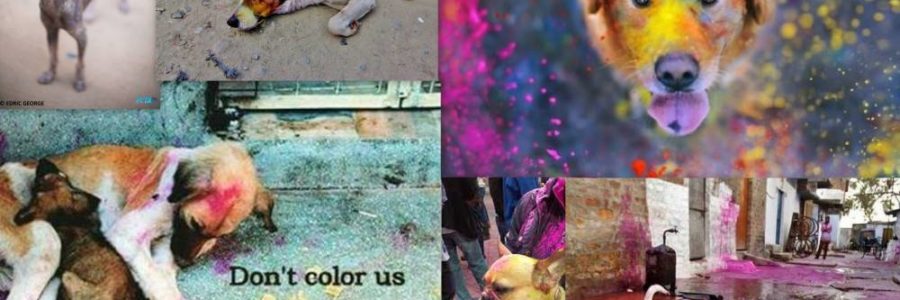Wishing all a Happy Holi without poisonous artificial colours ..
होली_की_शुभकामनाएं भारत India
Please like and share & support Green India, Clean India
Traditionally, spring flowers were used as a source of colours for Holi, but with time artificial colours have replaced these natural ingredients. For yellow, turmeric powder was used, hibiscus flowers made for the red colour and henna was for green. But today, markets are flooded with expensive artificial colours with chemical solvents mixed in them. In the name of fancy products, dark shades like green, violet and black are bottled-up copper sulphate, mercury sulphite and lead oxide in high content.
Another study conducted under the National Biodiversity Strategy and Action Plan revealed that chemical colours have all but wiped out vegetable dyes.
“Harsh chemicals used in the colours can cause itching and rashes which can lead to eczema or dermatitis. Dry skin leaves a lot of scope for damage from these harmful chemicals as the skin layer allows the colour to penetrate easily.
Traditionally, spring flowers, berries, spices and other plants were used for making coloured gulal and wet colours from flowers like hibiscus etc. There is no doubt that Holi is one of the most popular festivals of India, but there are dangers associated with the event too, such as the blatant use of inexpensive, artificial and bright colours made with the help of chemical solvents and toxic agents like lead oxide, mercury sulphite and copper sulphate etc.
Baba Alexander, New Delhi, Global Goodwill Ambassador.
#Holi #Krishna #Holitips #Holi2021 #colors #color #HoliColors #Colorful #holihai #HappyHoli #ColorFestival #होलीआयी #FestivalOfColors #IndianFestival #HoliFestival #IncredibleIndia #Tips #WhatToWear #BeSafeThisHoli #SafeHoli #होली #India #Indian #Indians #भारत #SriKrishna #GreenIndia #SwachhBharatAbhiyan #होलीकीशुभकामनाएं #होली2021


